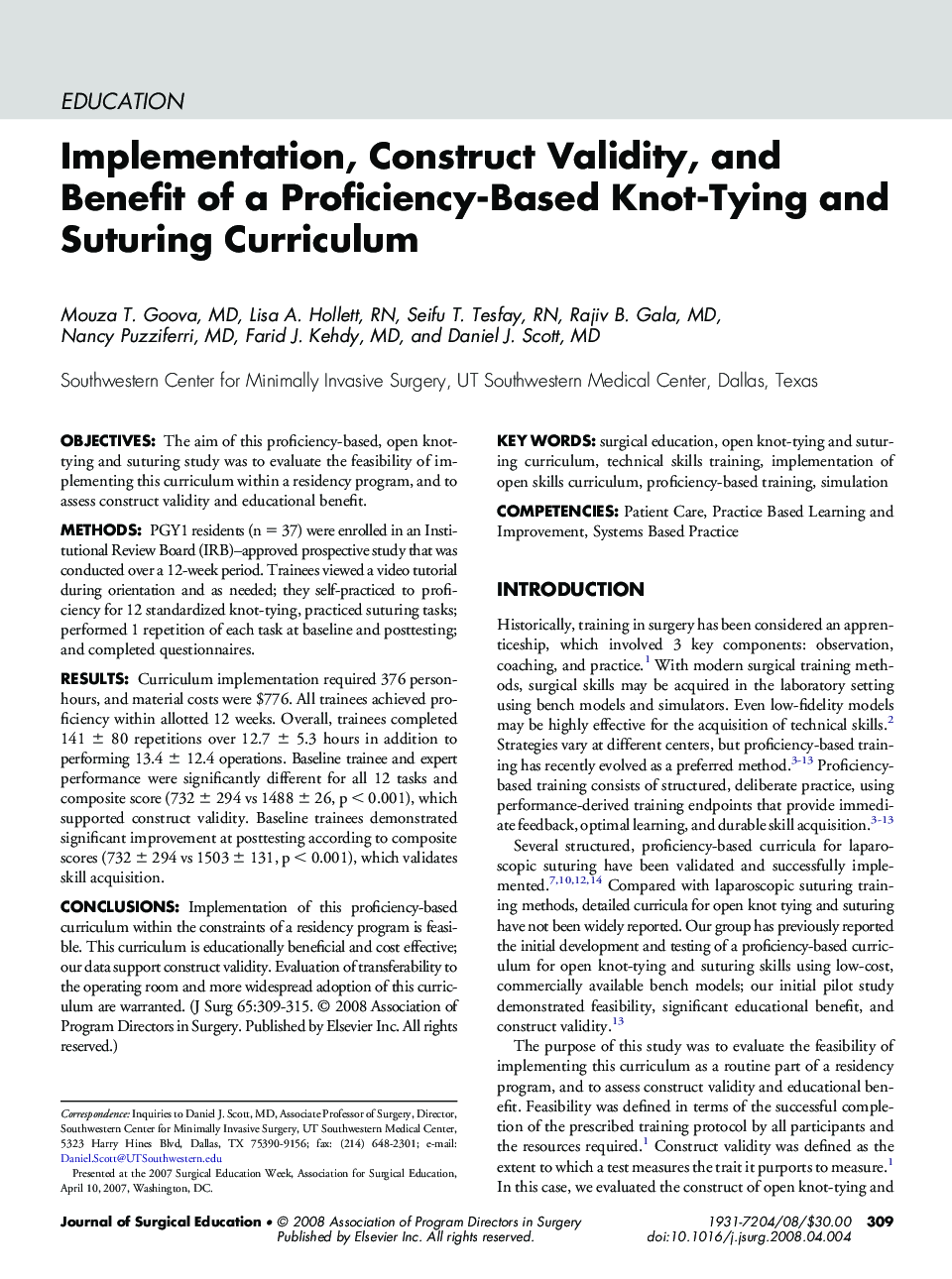| Article ID | Journal | Published Year | Pages | File Type |
|---|---|---|---|---|
| 4298660 | Journal of Surgical Education | 2008 | 7 Pages |
ObjectivesThe aim of this proficiency-based, open knot-tying and suturing study was to evaluate the feasibility of implementing this curriculum within a residency program, and to assess construct validity and educational benefit.MethodsPGY1 residents (n = 37) were enrolled in an Institutional Review Board (IRB)–approved prospective study that was conducted over a 12-week period. Trainees viewed a video tutorial during orientation and as needed; they self-practiced to proficiency for 12 standardized knot-tying, practiced suturing tasks; performed 1 repetition of each task at baseline and posttesting; and completed questionnaires.ResultsCurriculum implementation required 376 person-hours, and material costs were $776. All trainees achieved proficiency within allotted 12 weeks. Overall, trainees completed 141 ± 80 repetitions over 12.7 ± 5.3 hours in addition to performing 13.4 ± 12.4 operations. Baseline trainee and expert performance were significantly different for all 12 tasks and composite score (732 ± 294 vs 1488 ± 26, p < 0.001), which supported construct validity. Baseline trainees demonstrated significant improvement at posttesting according to composite scores (732 ± 294 vs 1503 ± 131, p < 0.001), which validates skill acquisition.ConclusionsImplementation of this proficiency-based curriculum within the constraints of a residency program is feasible. This curriculum is educationally beneficial and cost effective; our data support construct validity. Evaluation of transferability to the operating room and more widespread adoption of this curriculum are warranted.
